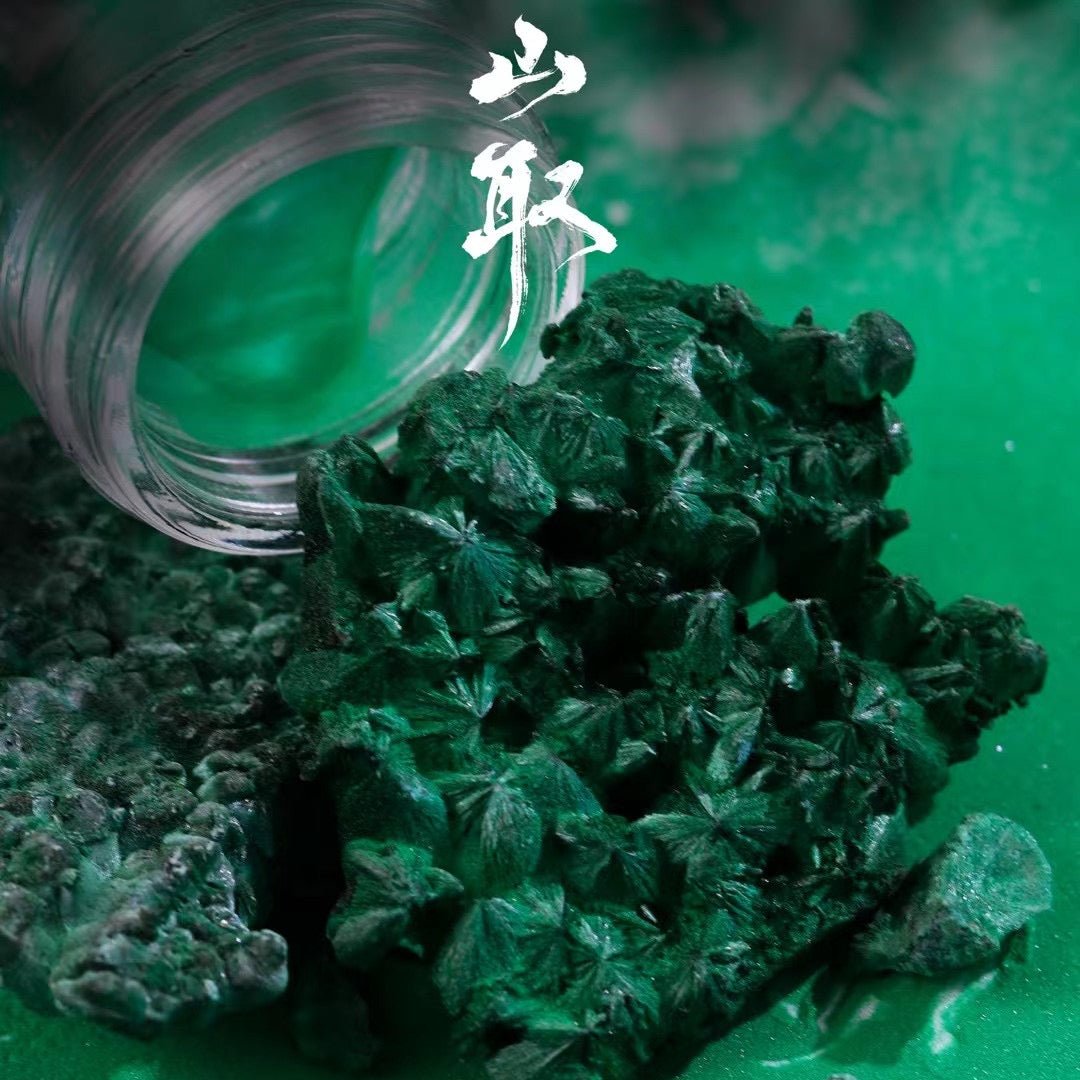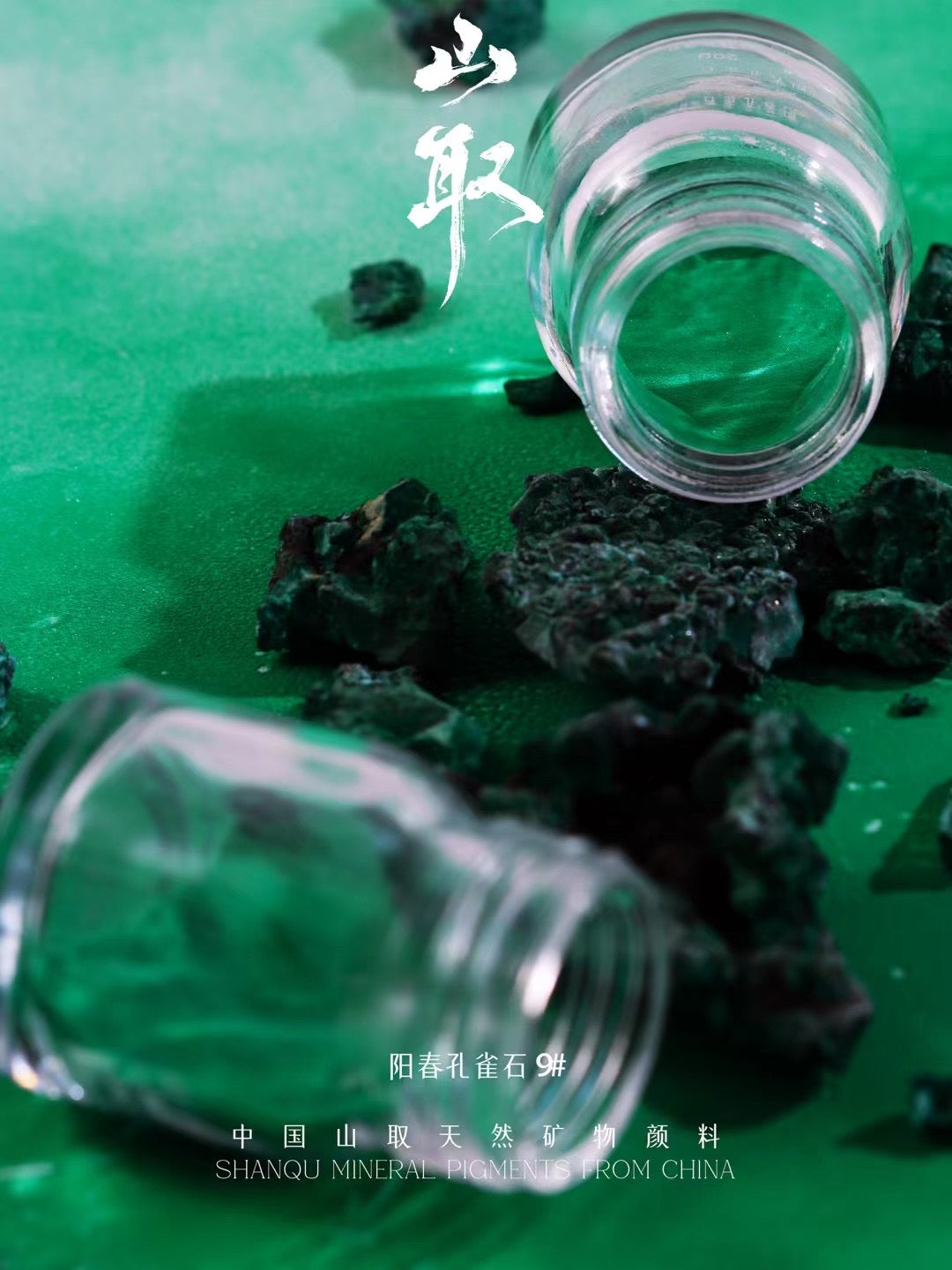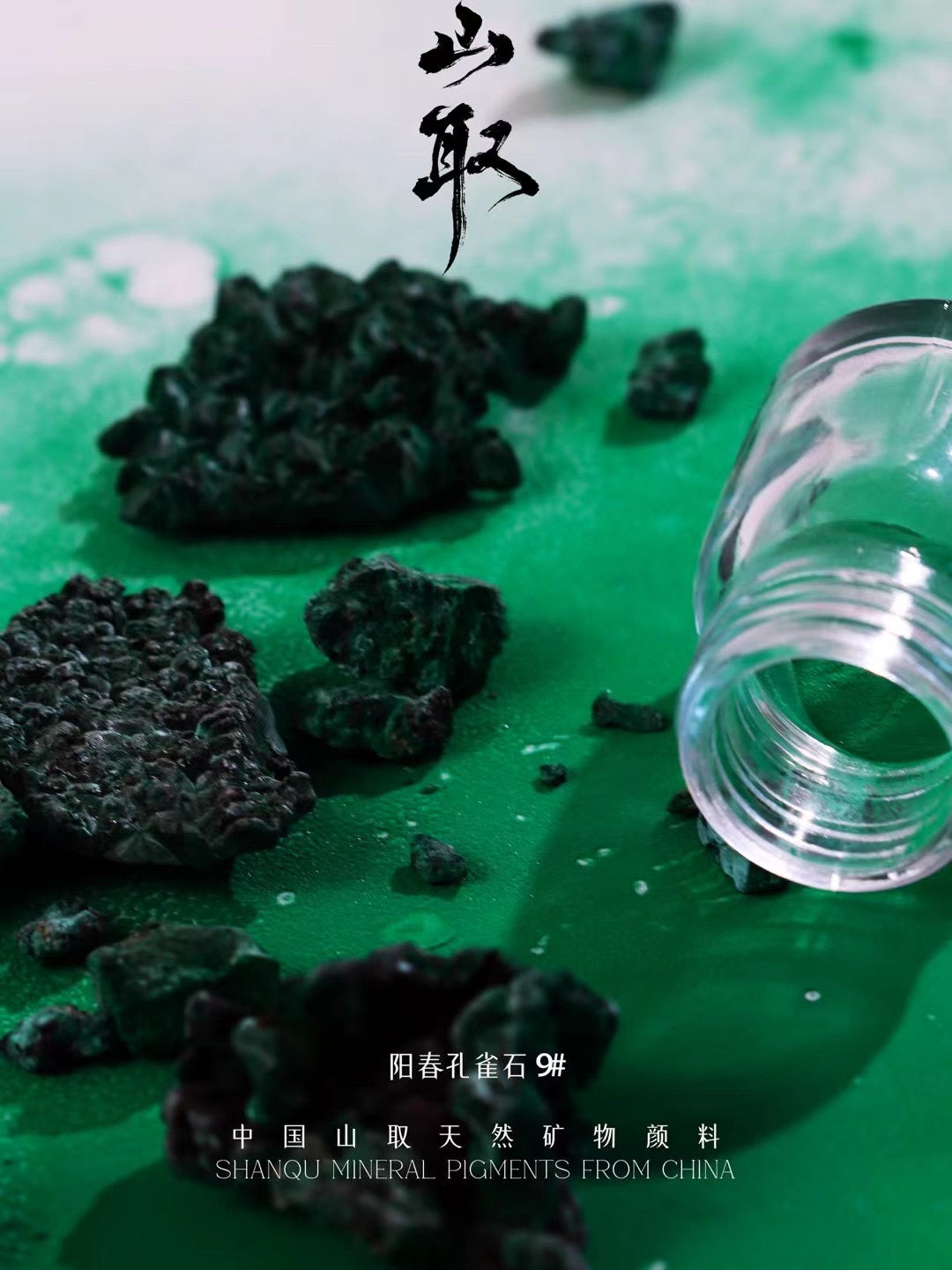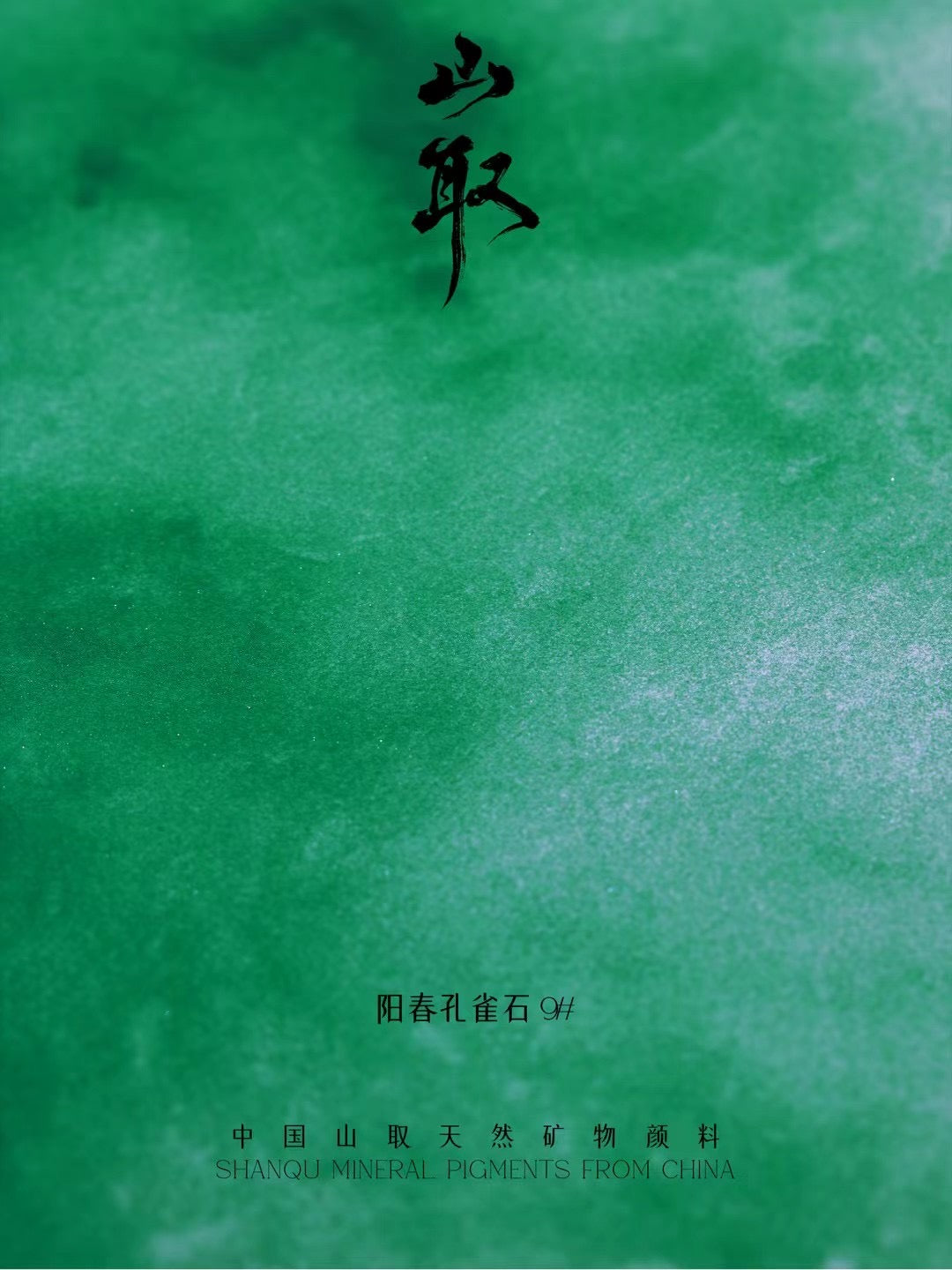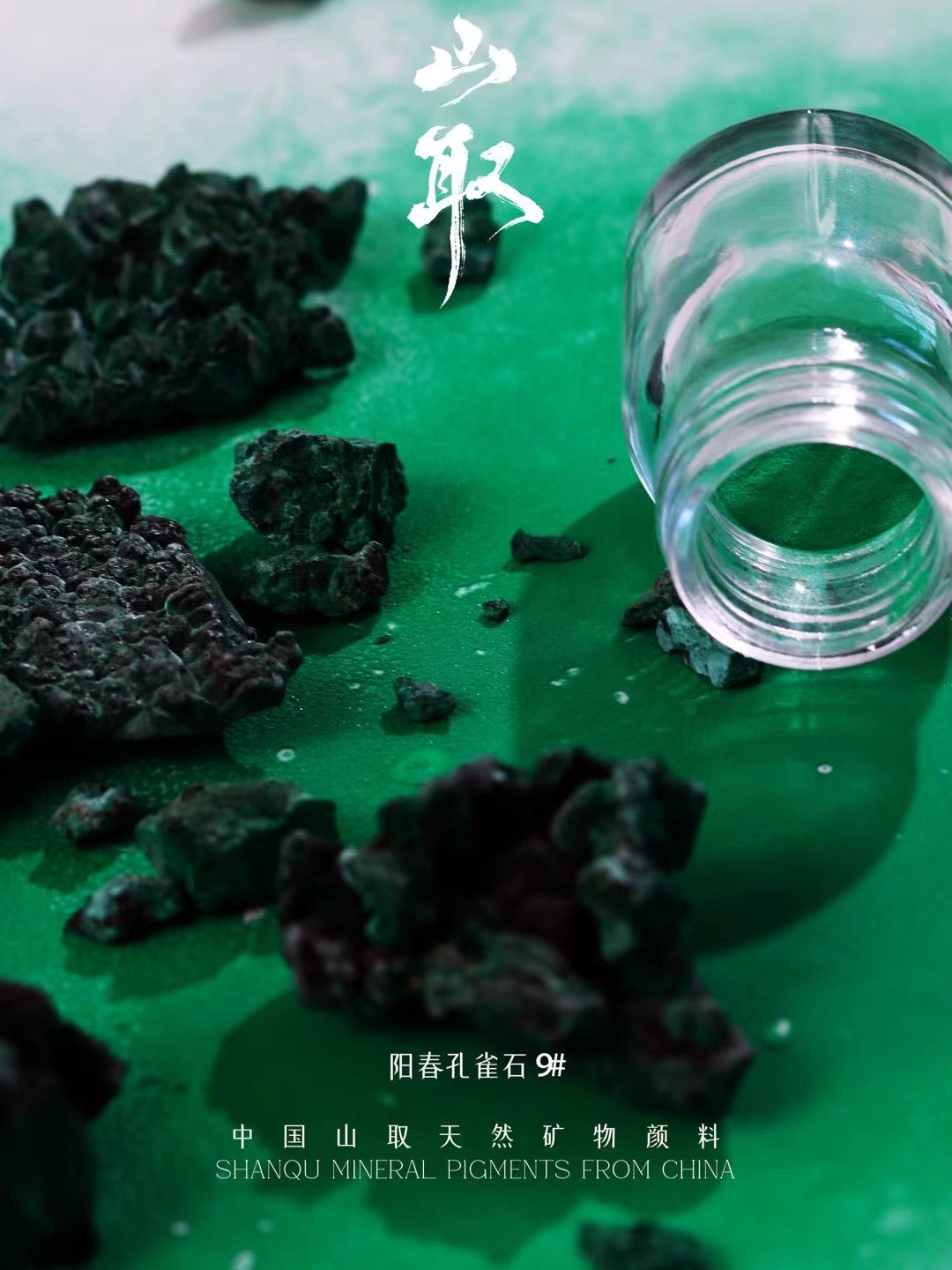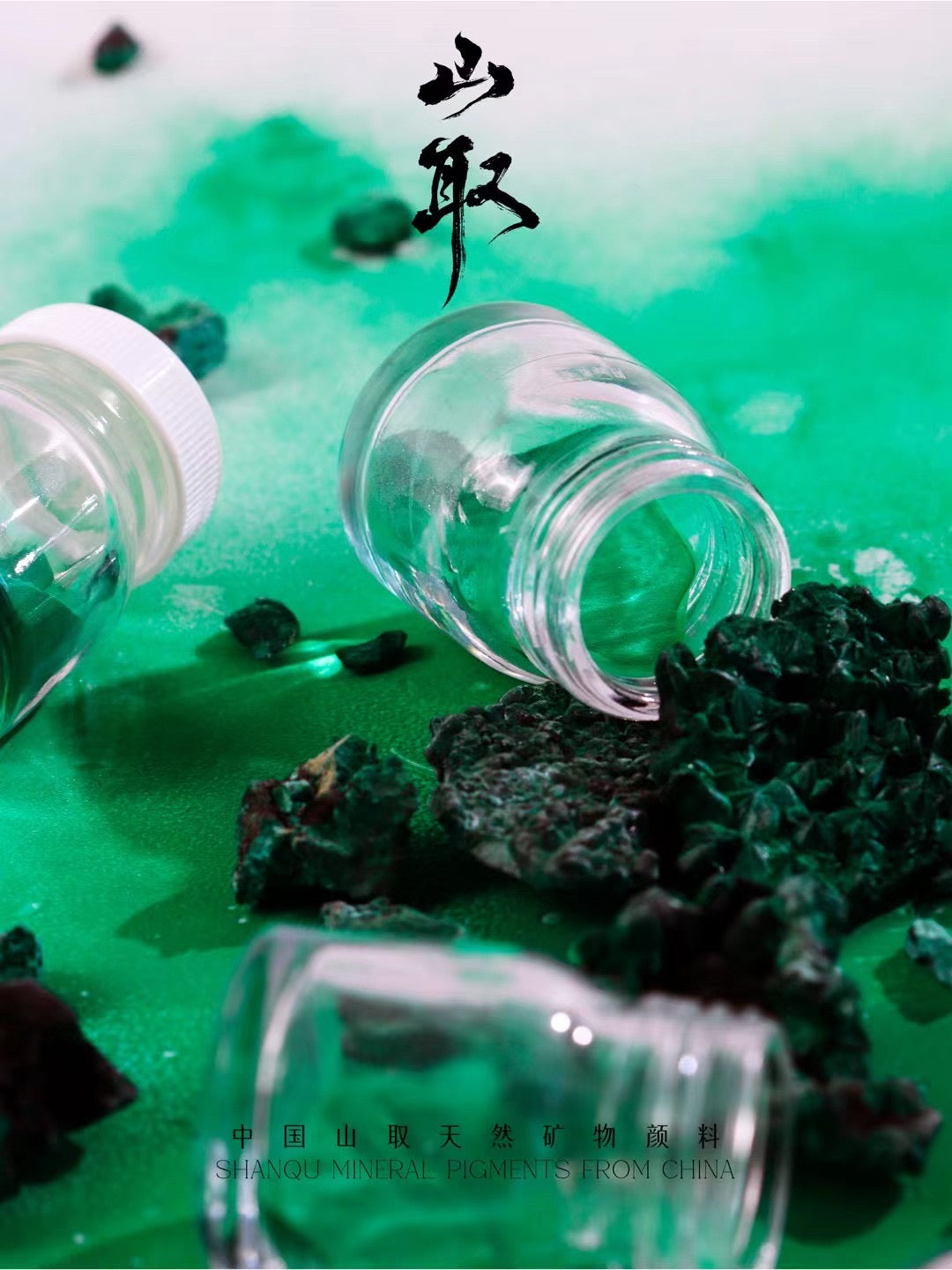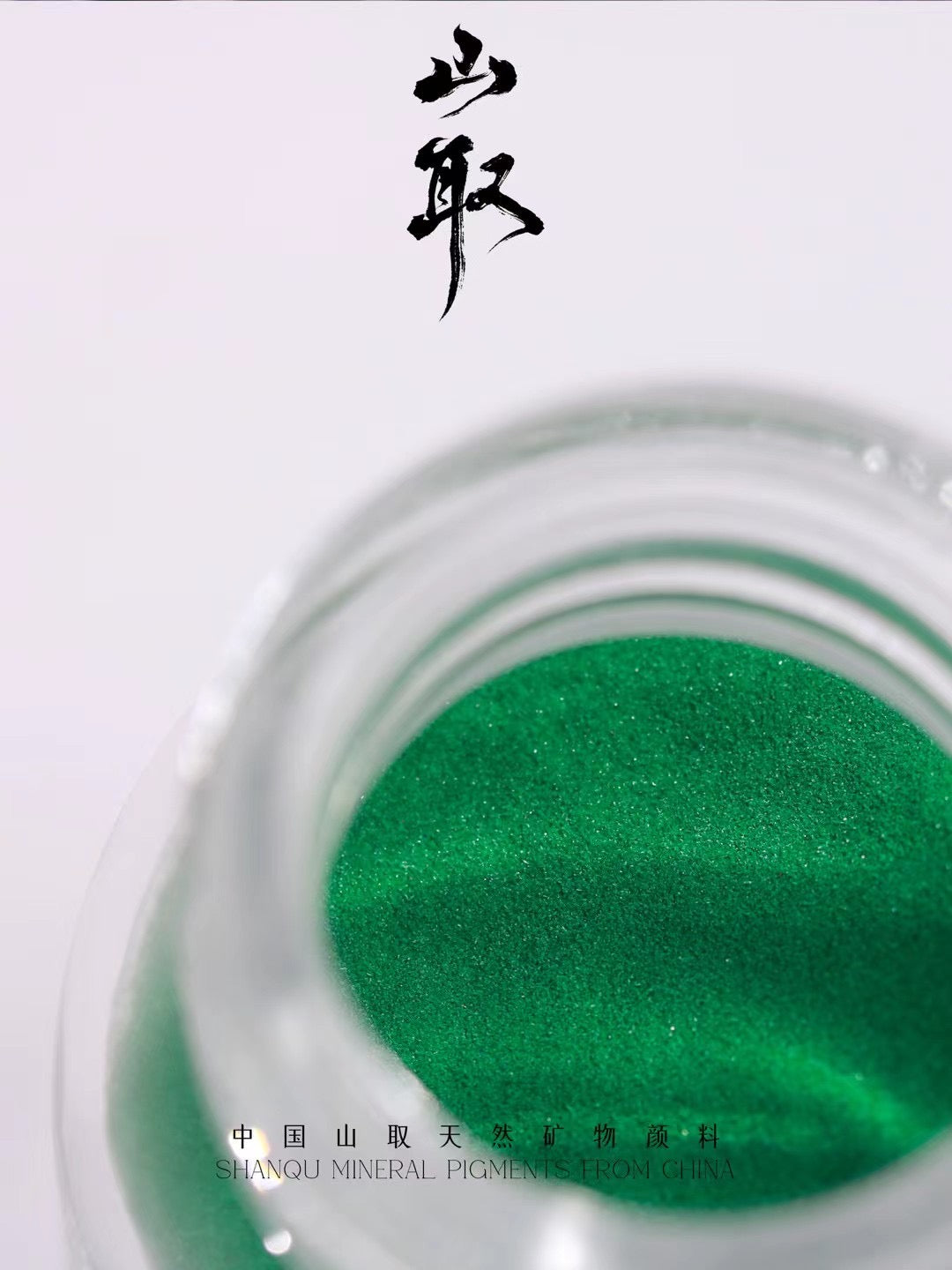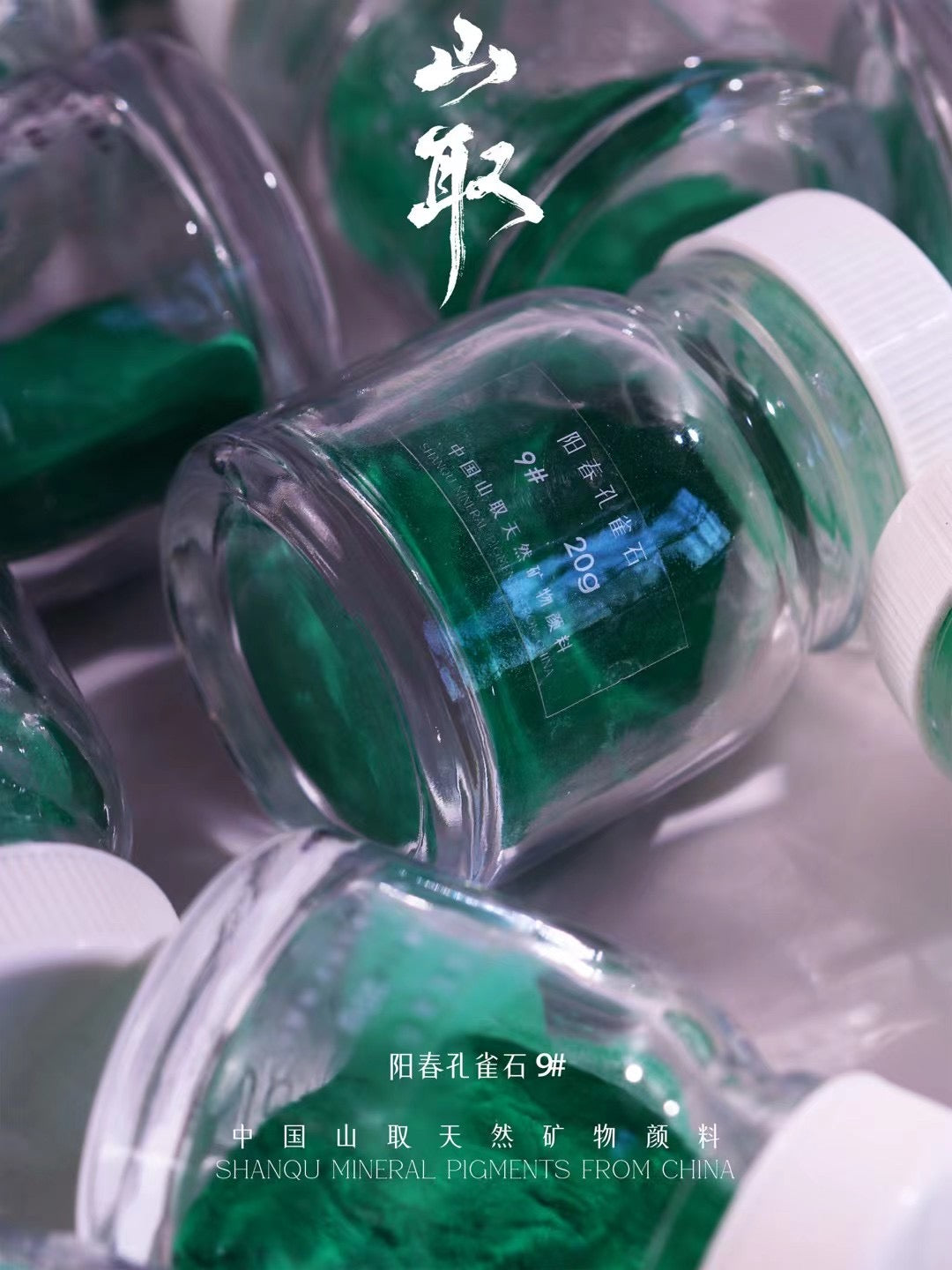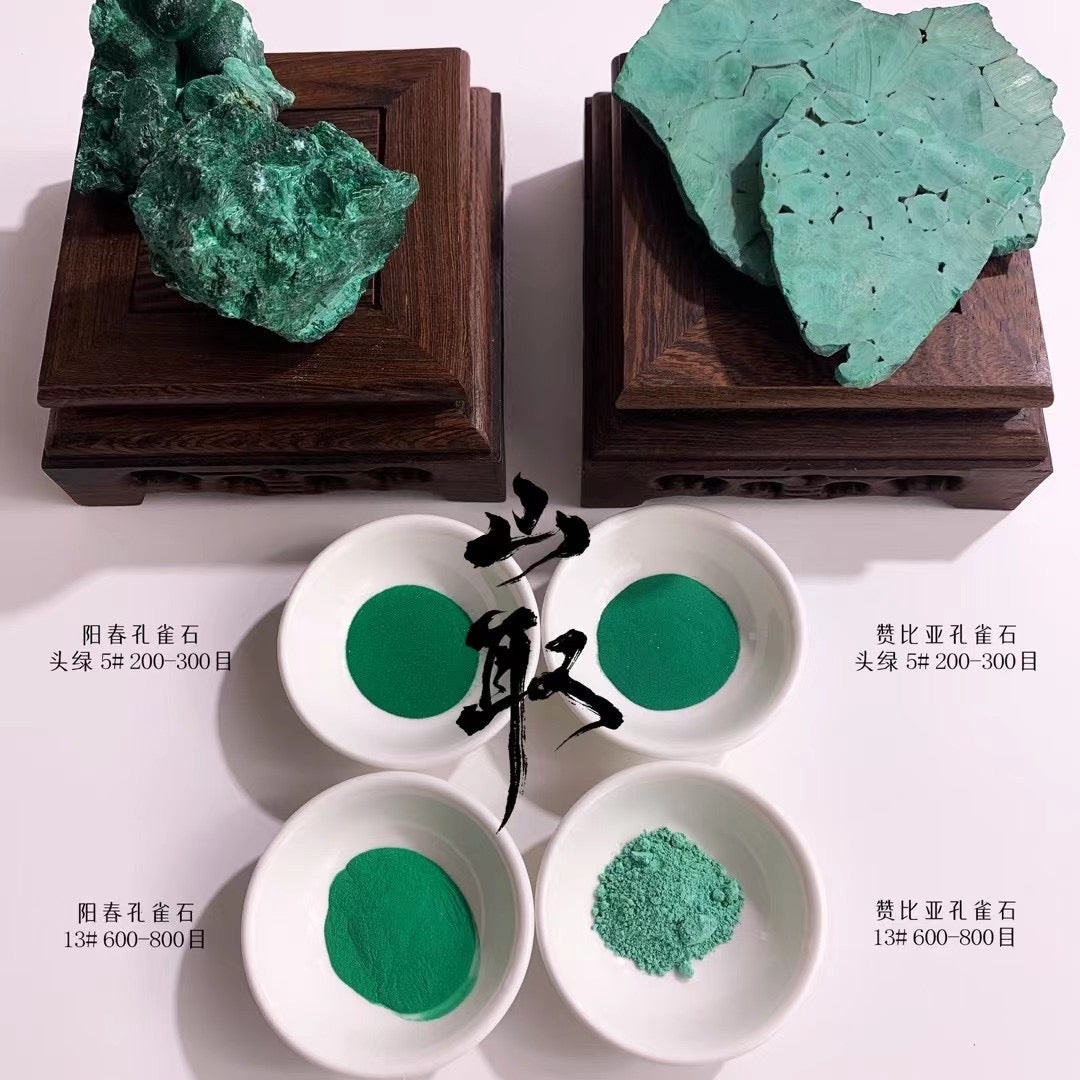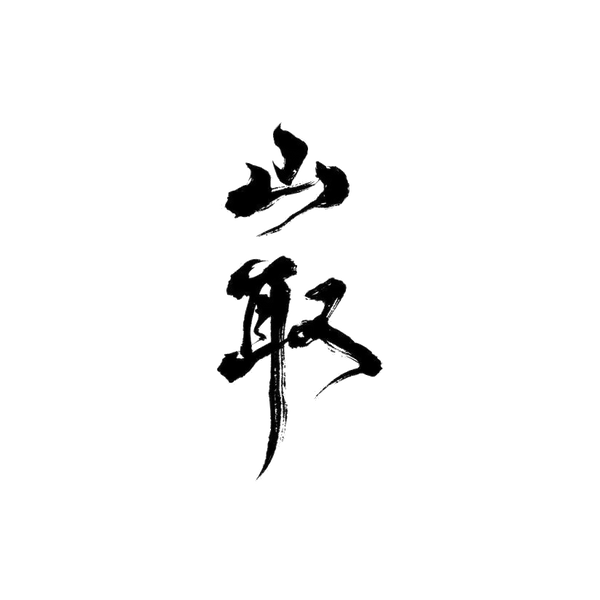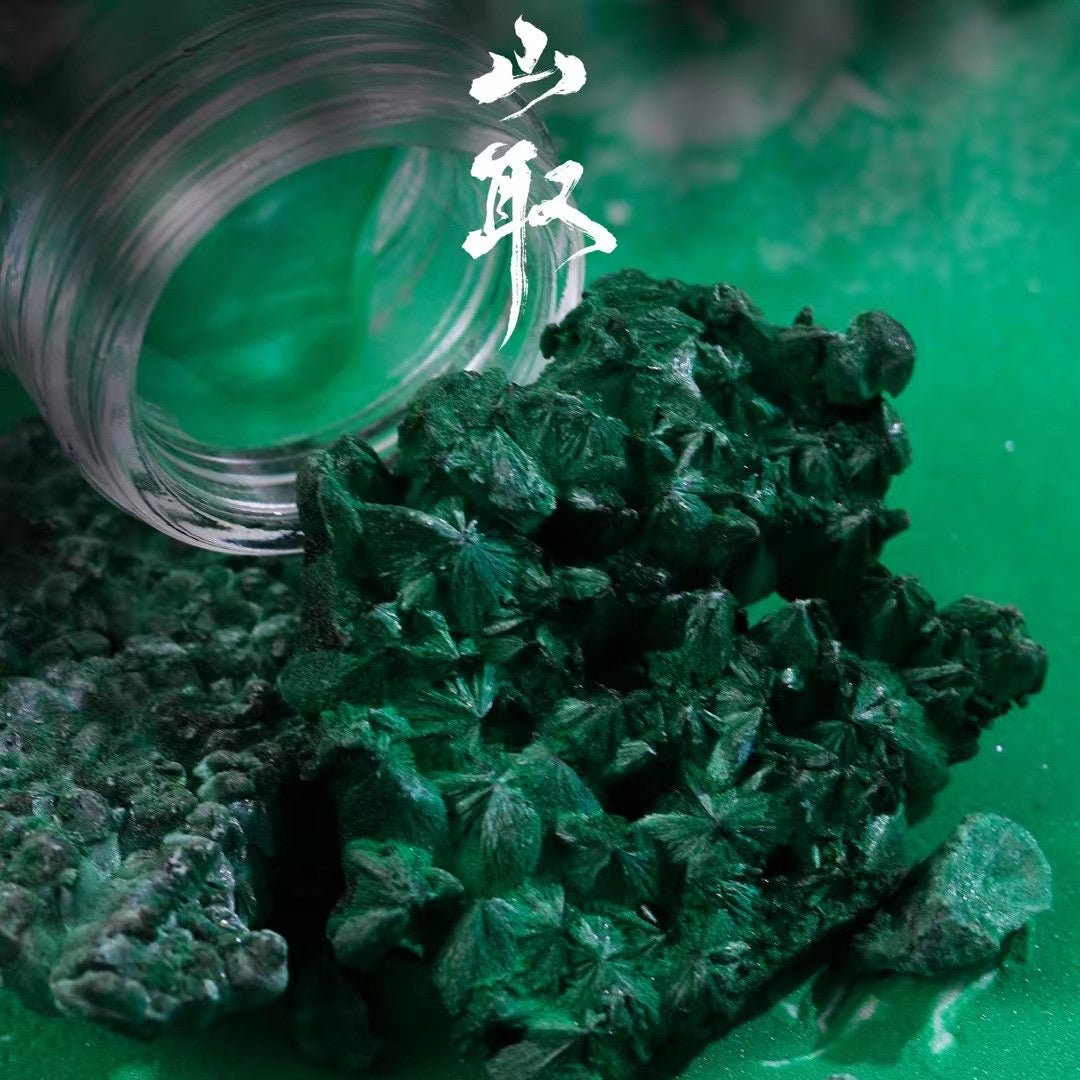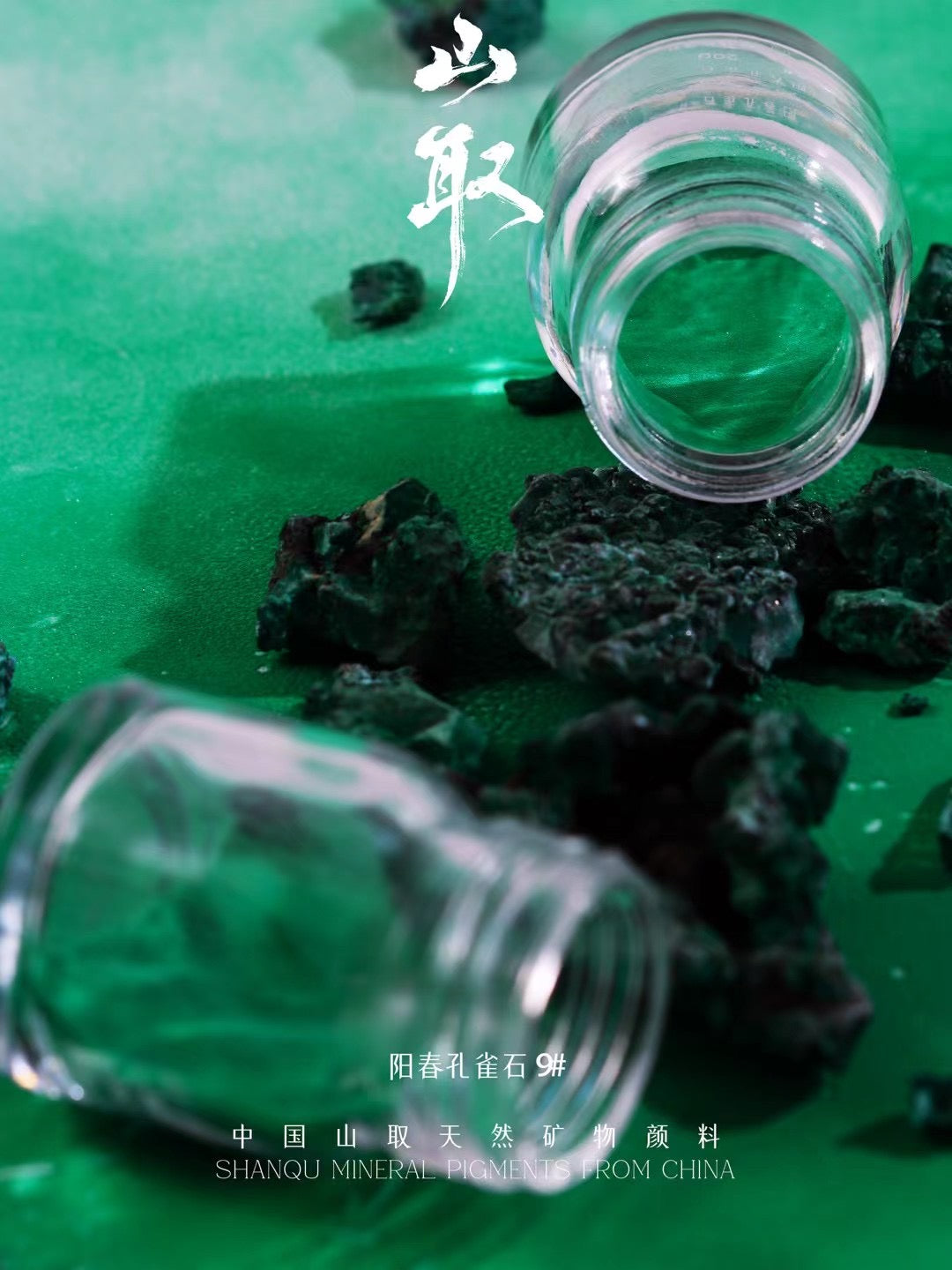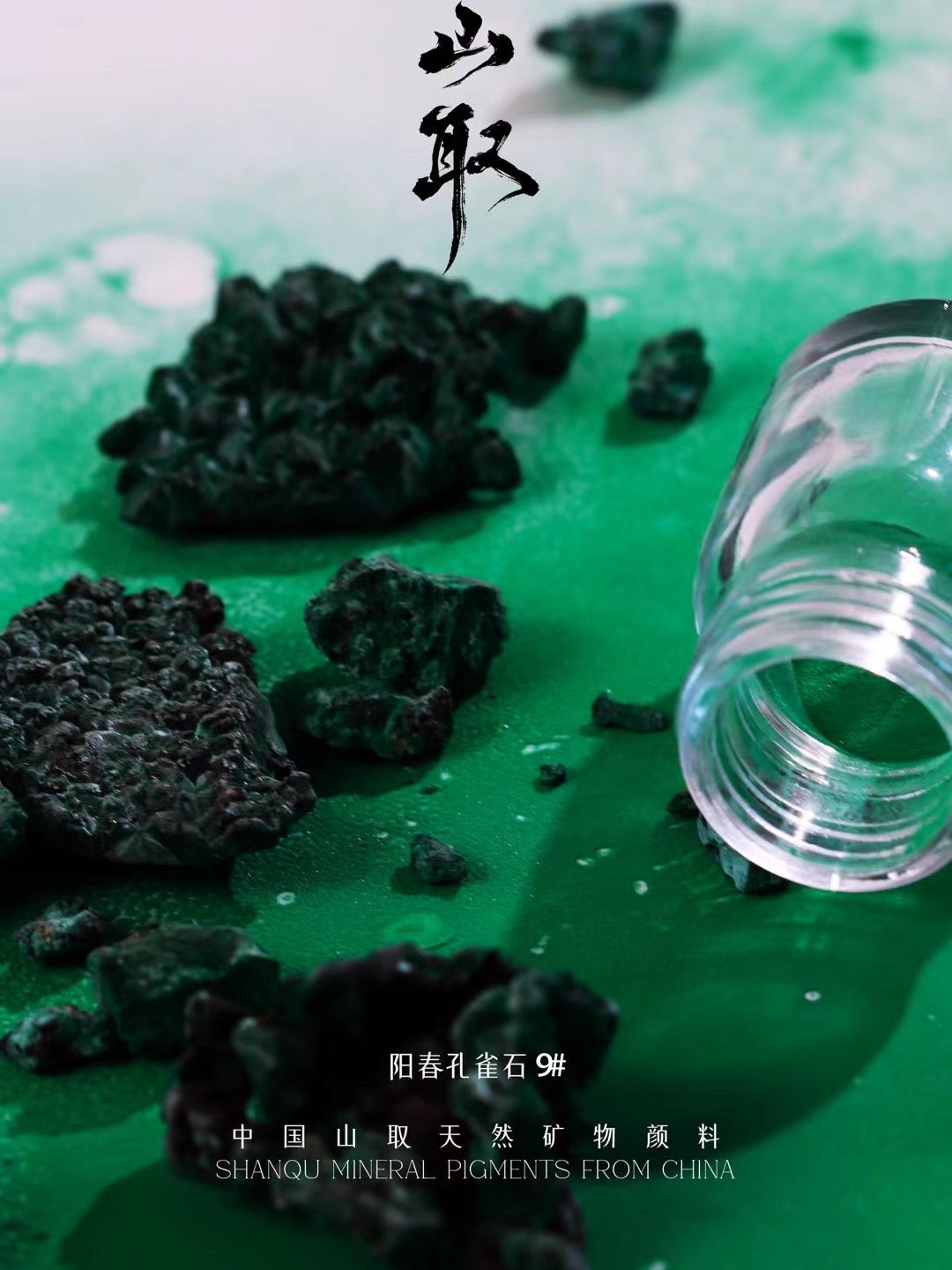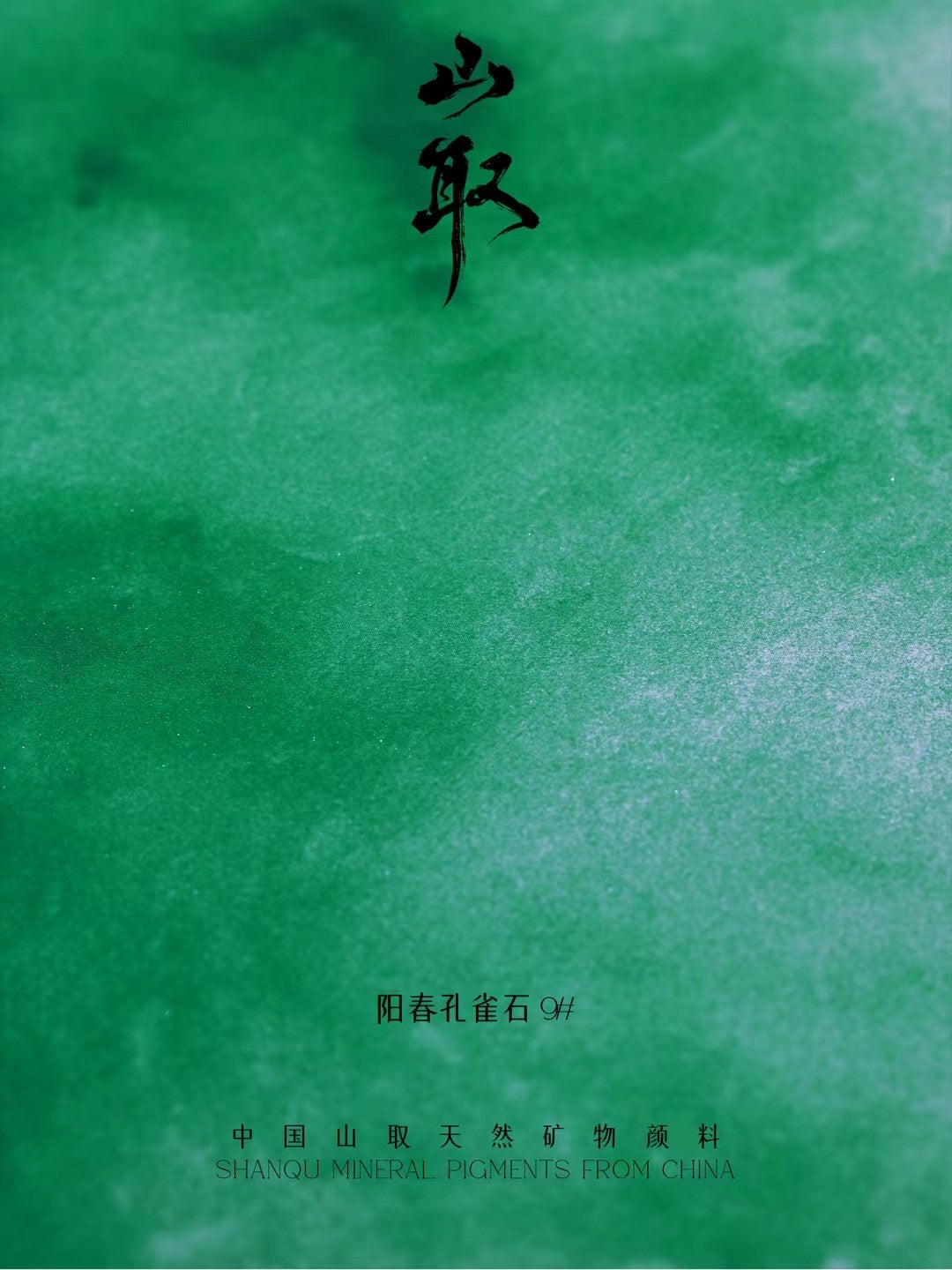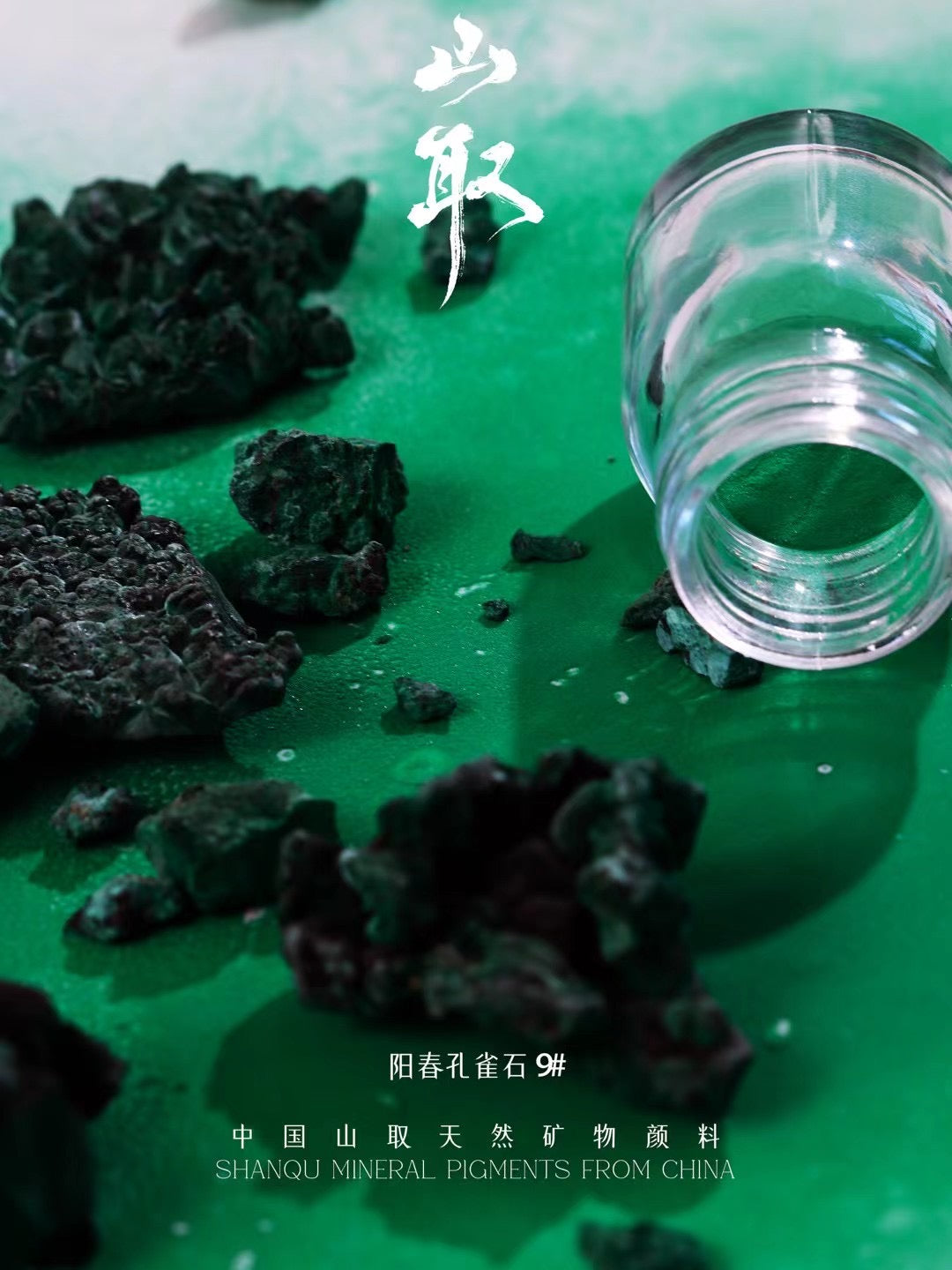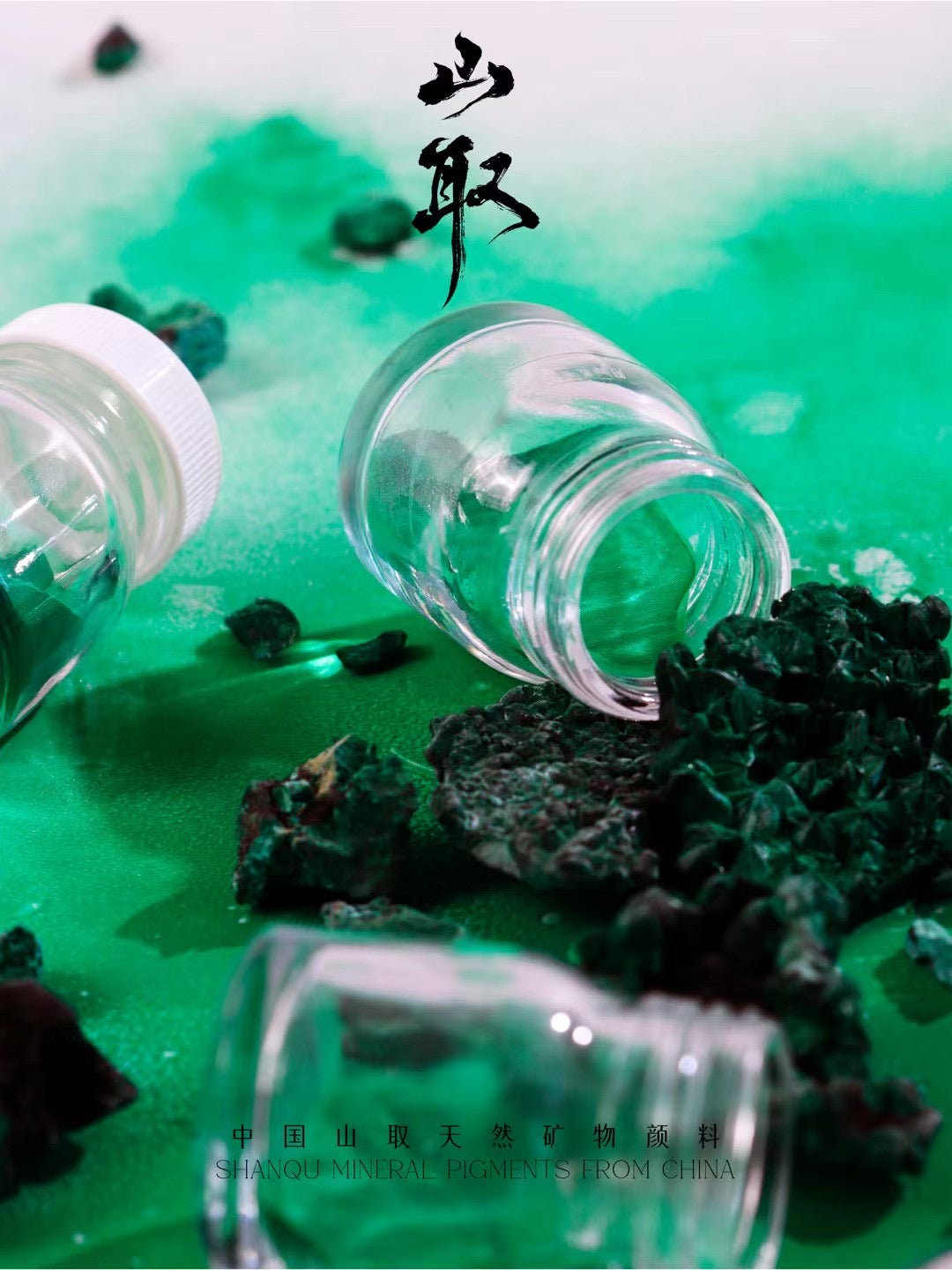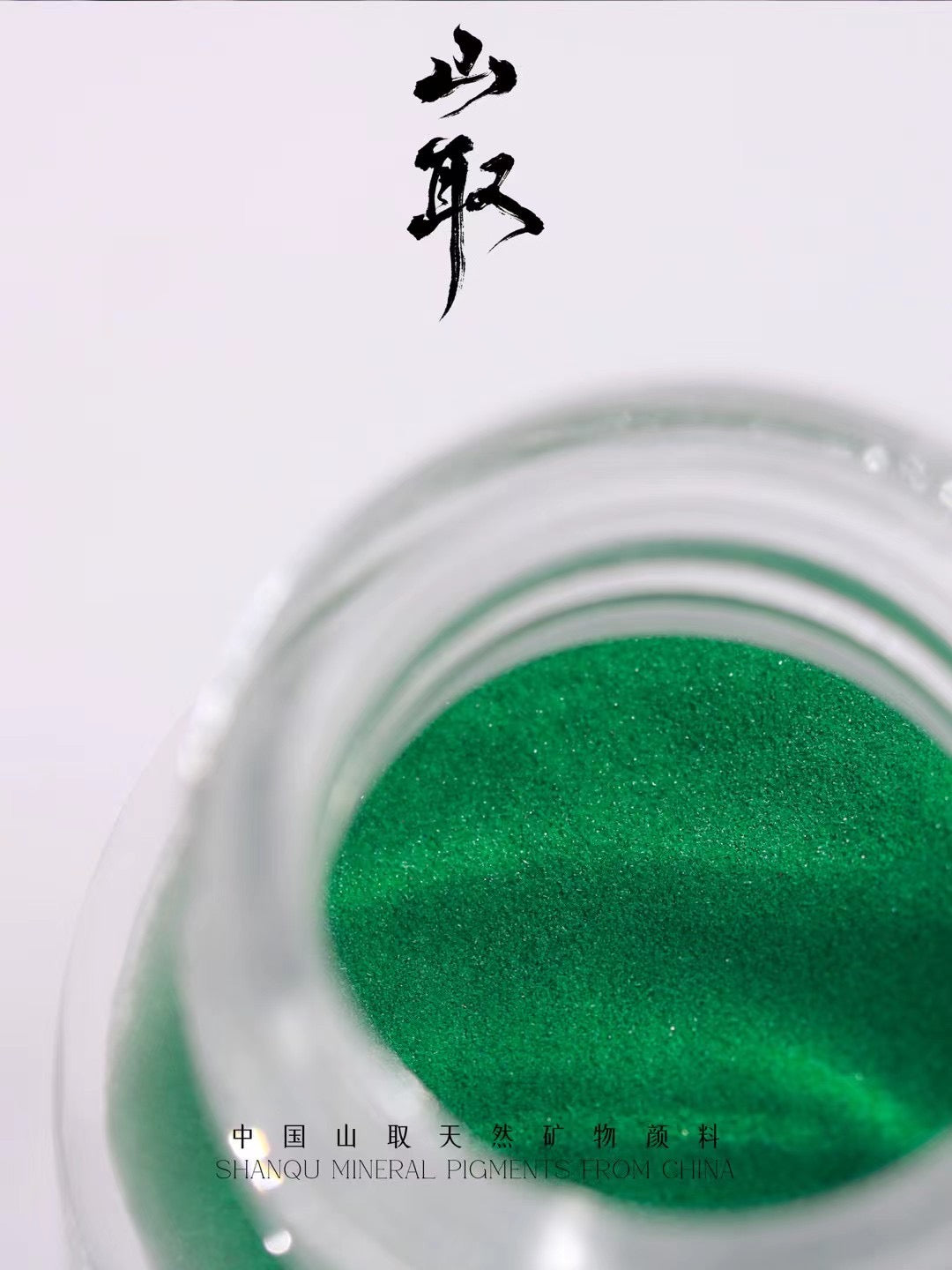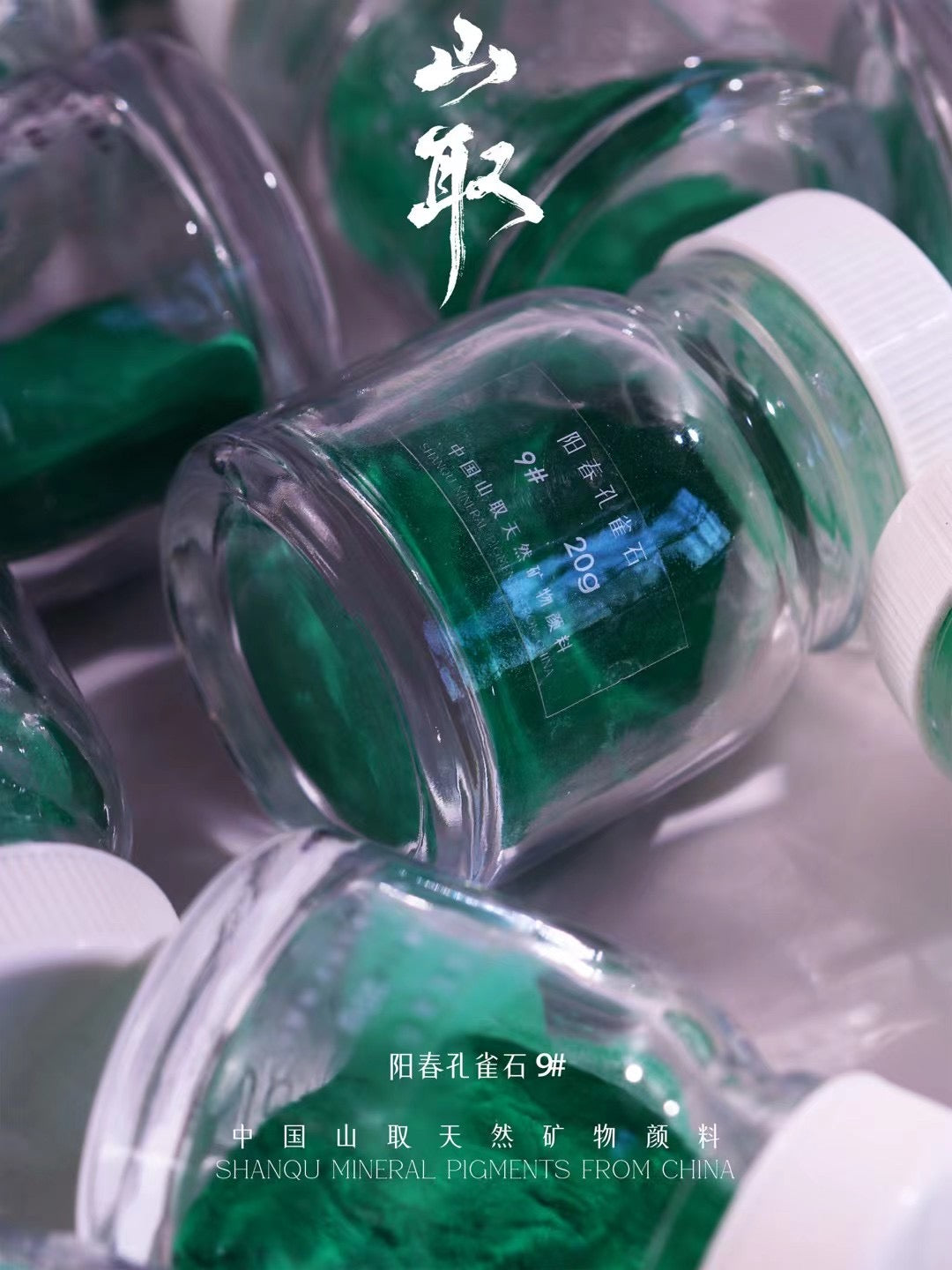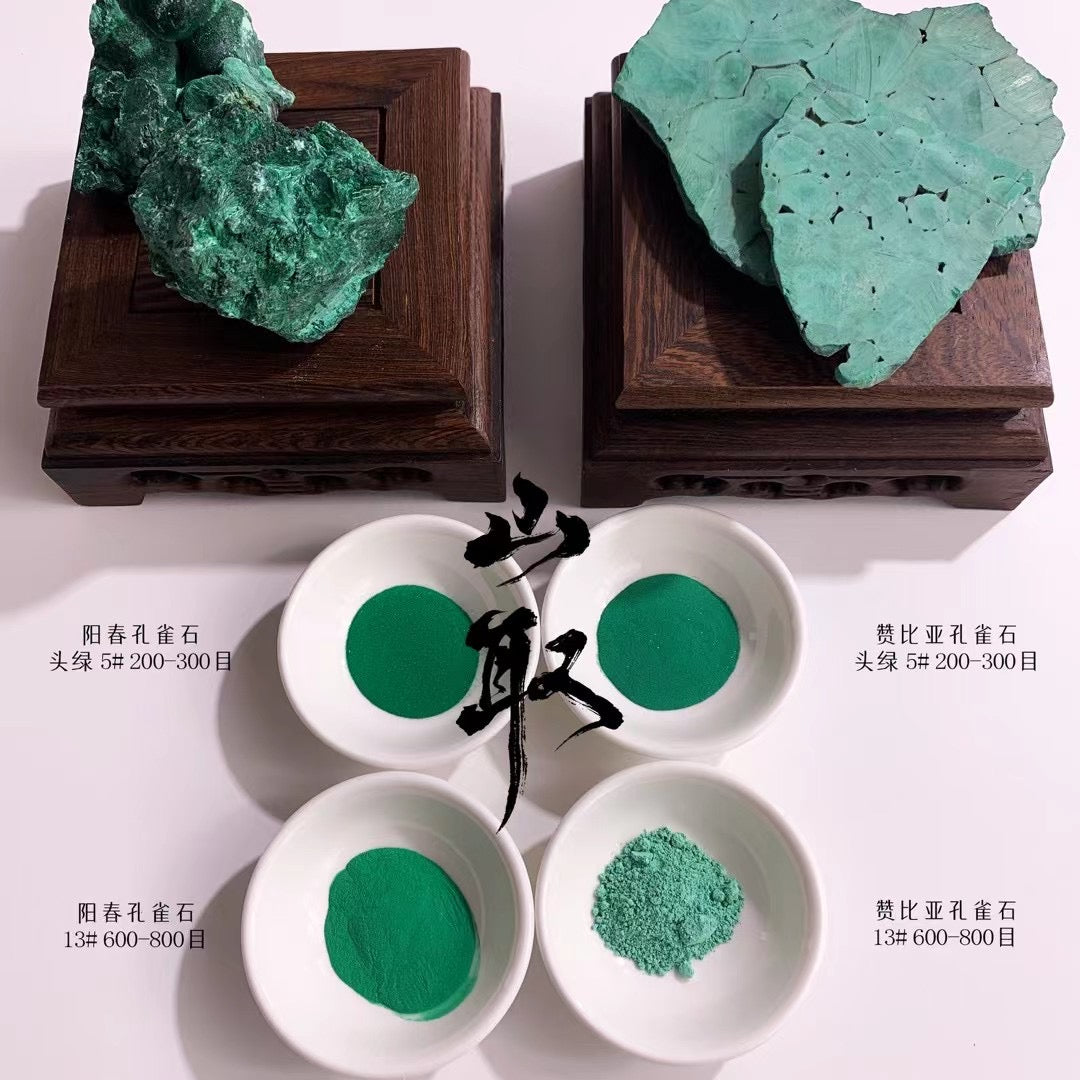Shanqu pigment
【008】Yangchun Malachite -mineral pigment
【008】Yangchun Malachite -mineral pigment
Couldn't load pickup availability
Shanqu The "Yangchun malachite" of natural mineral pigments:
Chemical Formula: Cu₂(CO₃)(OH)₂
Hue: Green (finer grades may appear slightly whiter)
Saturation: High
Material Property: Mineral pigment
Luster: Diamond-like to vitreous luster; fibrous crystals exhibit silky luster
Storage: Avoid contact with acidic/alkaline solvents and volatile gases
Hardness: 3.5–4 (can be crushed with a standard ceramic mortar)
The Story of the Pigment
An experienced pigment master can tell at a glance what color a piece of ore will yield and its intensity—this is fundamental skill. Yet, Yangchun Malachite seems to be an exception. An unremarkable-looking chunk of Yangchun Malachite can produce a pigment that surpasses even museum-grade "acicular malachite" or "cat's-eye malachite." Conventionally, the more "crystal needles" or "cat's-eye effects" a malachite has, the richer and more luxurious its pigment is assumed to be. But Yangchun Malachite defies these expectations.
The Story of Malachite
Since ancient times, malachite has been used as a natural mineral pigment for green-blue hues, in jewelry, and as a copper-bearing carbonate mineral. In Japan, it is also called "kujakuseki" (peacock stone). Its striking green banded patterns, varying in intensity, make it a favorite for ornamental carvings and gemstones. Over 4,000 years ago, ancient Egyptians ground malachite into powder for use as eye shadow. The Greeks and Romans employed it as both a pigment and a decorative stone. By the 19th century, Russia's Ural Mountains had become a major source, where malachite was crafted into tables, vases, and other artifacts, gaining widespread acclaim. The Winter Palace in St. Petersburg (now the State Hermitage Museum) even houses a "Malachite Room" adorned with malachite columns and furniture.
Today, the Ural deposits are exhausted, and the Democratic Republic of the Congo has become the primary supplier of decorative malachite. Other sources include South Australia, Morocco, Arizona (USA), and Lyon (France).
Malachite is also a secondary copper ore, often found alongside azurite in the oxidation zones of copper deposits. Its fibrous crystals form radial aggregates, appearing in botryoidal, crust-like, or stalactitic formations. Variations in green intensity are due not to compositional differences but to crystal grain size—finer particles yield brighter tones. Large crystals exhibit deep, rich hues but are exceptionally rare.
Share
